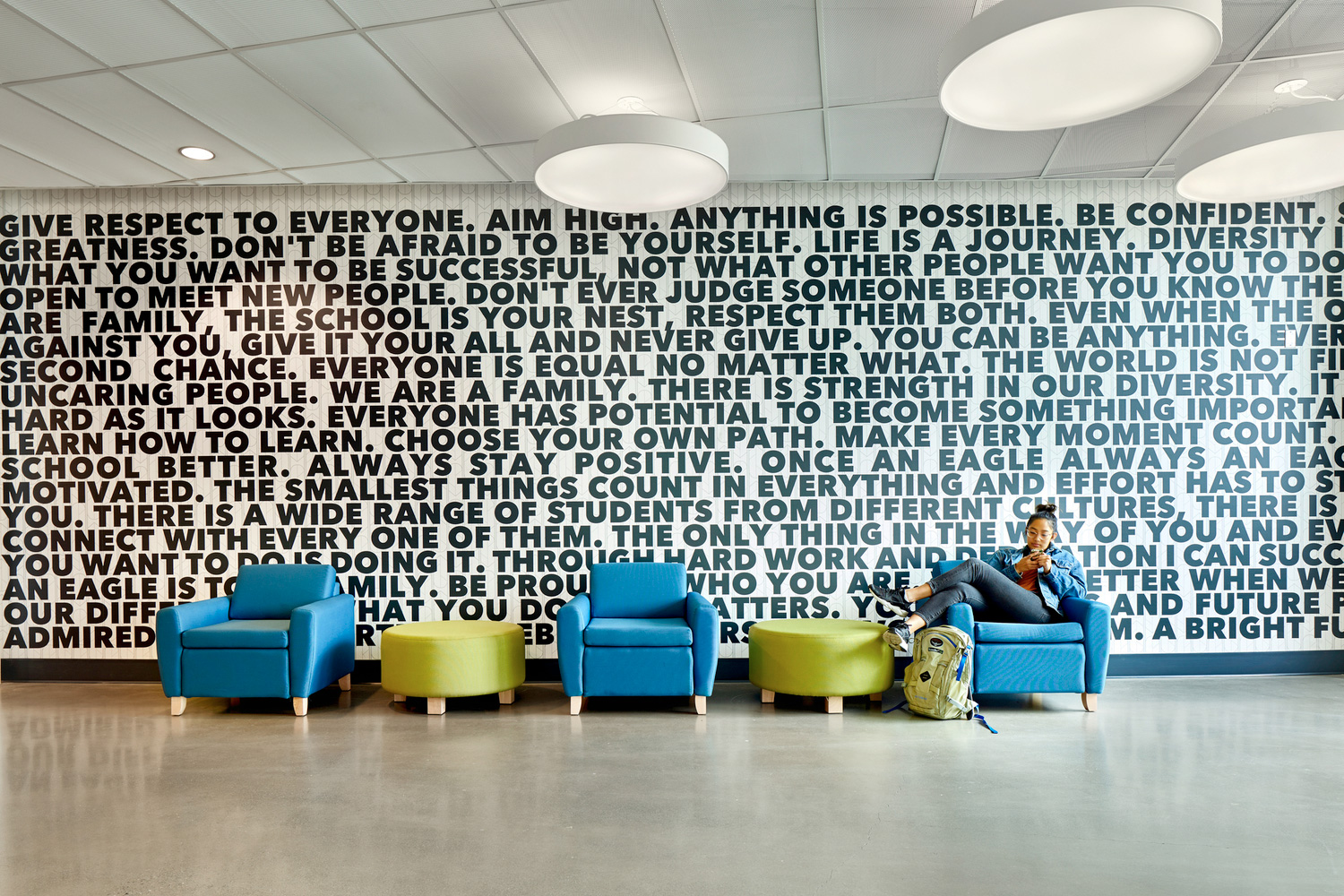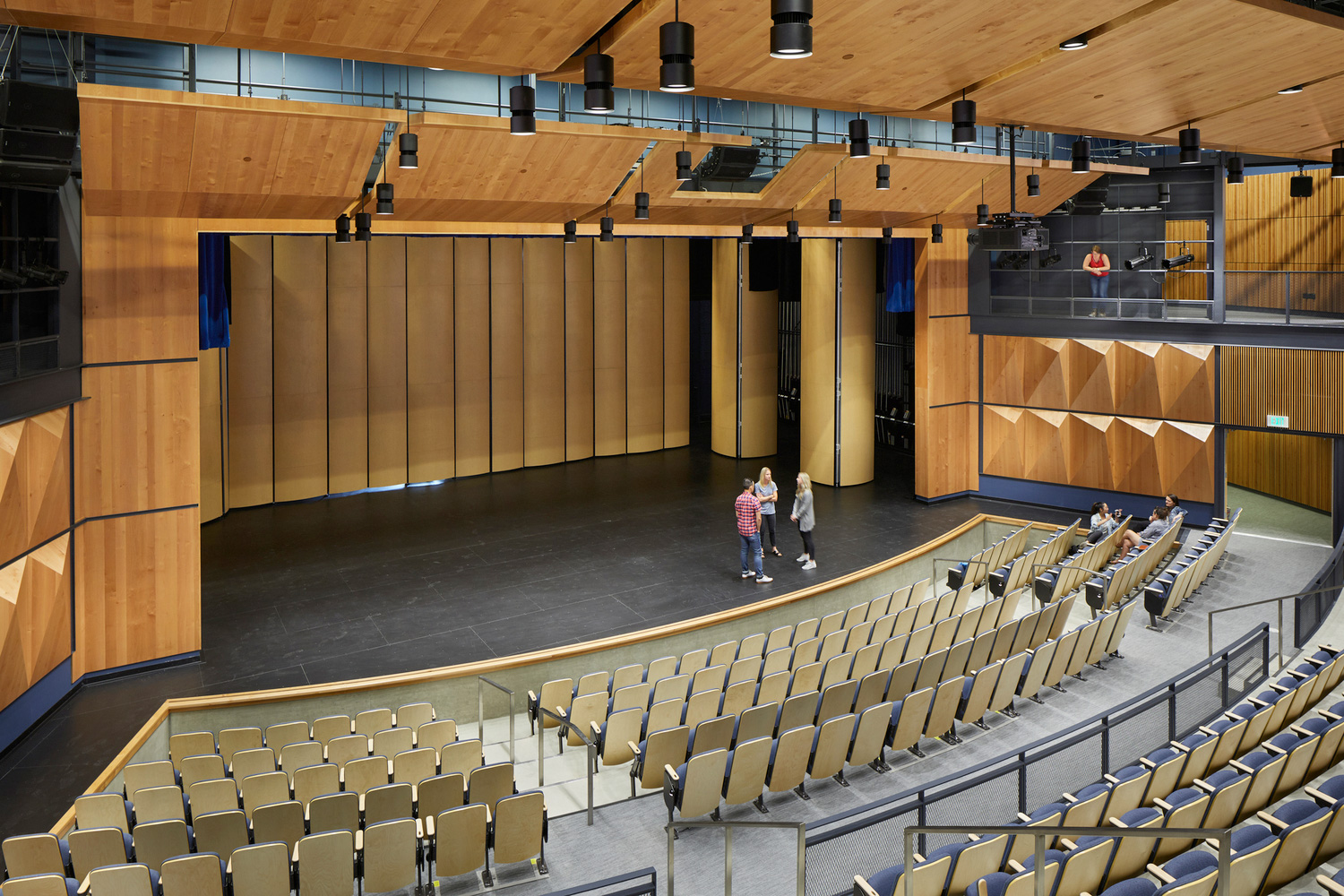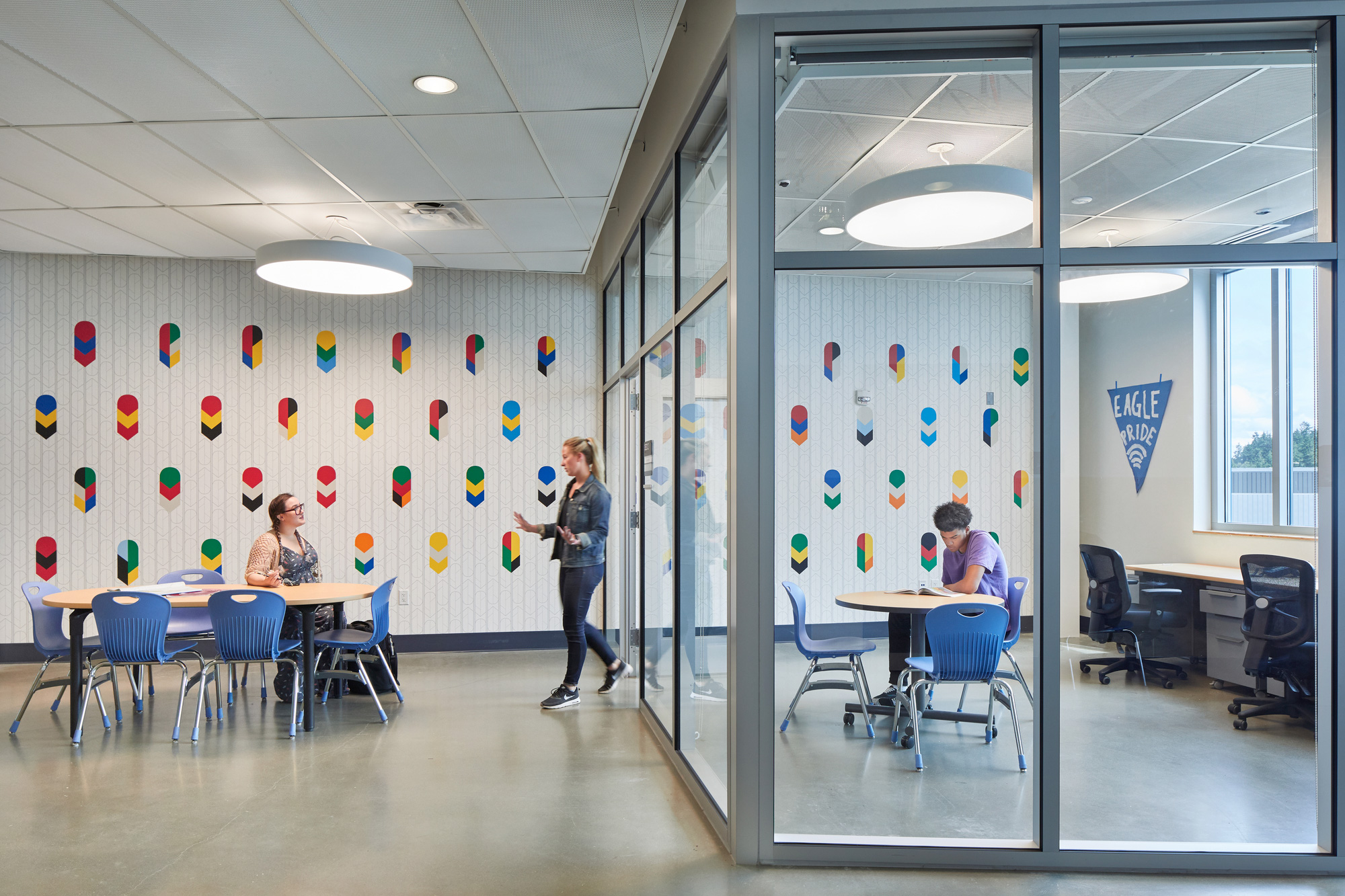Story at a glance:
- Human-centric design for schools considers place, flexibility, and visibility.
- Federal Way High School is organized in two halves—one for activities and one for classrooms.
- SRG Partnership worked with the students, staff, and the community on the forward-thinking design.
Well-designed spaces foster feelings of safety and certainty for all who use them. What that means, though, and what it implies for the physical environment can vary widely depending on who those users are.
This challenge requires designers to harness empathetic, human-centric design to meet a variety of needs within a space. This design approach is especially critical in schools. High schools bring together kids from diverse backgrounds during a pivotal time in their development. Some students may come from households that provide the emotional security they need, while for others, school may be their only opportunity to find that security and structure.
The Vision

Federal Way High School, Washington. Photo by Benjamin Benschneider
The project team at SRG Partnership was inspired by all of the students met throughout designing Federal Way High School, from the drama kids who were born to perform and commented, “We don’t care if there’s an audience, we just want a really big stage,” to a shy girl who just wanted “a place to be alone.”
Adults can get tripped up by the premise that teens are aloof and rebellious and then look to design to enforce control and discipline. The truth is, these kids are committed to their school—the traditions, programs, teachers, and staff. The new building provided an opportunity to build on the pride of this place with a safe school design that goes beyond just typical classroom and academic facilities.
The building is organized into two halves—one half for the auditorium, gymnasiums, and activity rooms, and the other that provides the bulk of the building’s classroom space. A network of communal spaces connects the building’s two halves and produces opportunities for students to “see and be seen” by their peers, but also quiet nooks to find solitude without feeling isolated. These third places are vibrant, comfortable, communal places to share ideas and form relationships. From breakout zones in widened hallways to glass-walled small group rooms, third places support the concept of educating the whole child—socially, emotionally, and academically.

Inside Federal Way High School. Photo by Benjamin Benschneider
Graphics throughout the school incorporate ideas, language, and character contributed by the student body through a survey conducted by the design team. Vibrant murals and recurring feather motifs pay homage to the school’s eagle mascot in an array of applications to celebrate the diverse ethnic makeup of the student body, and the spirit, identity, and traditions of Federal Way High School.
Working Together

Federal Way High School was designed by SRG Partnership. Photo by Benjamin Benschneider

The team at SRG Partnership worked with Federal Way High School on a “two-sided theater concept.” Photo by Benjamin Benschneider
Federal Way High School’s success is due to collaboration that centered around listening. Initially, the project was met with some opposition and distrust. The City of Federal Way is young, but many people have lived there for generations. Recent years have brought rapid change and development, and residents feel protective of their community’s history. Voters wanted assurance that their tax dollars would fund quality design that resulted in a school the whole community would be proud of, so public outreach was paramount from the beginning of the project until the very end.
The project team was invested in building support, consensus, and trust in the project with the school district, students, staff, and the community at large. A range of forums, interactive events, and presentations provided opportunities for people of all backgrounds to express themselves and participate in the design process. The design team and the district proved that the high school could honor the history of the site in a way that empowered students and long-time residents alike.
The new building’s scale and location reclaim its presence on the Pacific Highway. Its visibility from the public way allows for passive security that promotes inclusivity rather than surrounding the school with physical barriers. Open boundaries invite visitors to the ball fields, walking paths, and the storm pond habitat.
Interior design emphasized great sightlines and visual connection so adults can provide supervision without impeding students’ freedom. Open spaces, nooks, classrooms, and meeting rooms were all designed with intentional geometry and window placement so everyone has a clear view of what is happening in a given space.
Planning for the Future

Bright colors fill Federal Way High School. Photo by Benjamin Benschneider
The project team understood that anything built on the assumptions of today could be an impediment to the ideas of tomorrow. Together the team regularly challenged itself with “What’s the least that could be built?” to avoid erecting obstacles to future flexibility.
The school district sought not only the best learning environment for today but to imagine the possibilities for learning environments in the future. Rather than a collection of unique and specialized spaces, the priority was to make great space with universal appeal suitable for many uses that can be easily manipulated and encourage experimentation.
From the start, spaces have been used in new ways not initially imagined. A small, glass enclosed study space was being utilized as a drop-in college counseling meeting point for academic advisors and students. Many public school teachers are used to working with very little, so they’re innovative and creative in how they use space and resources. Some of the key ideas of multi-use spaces in the school were directly inspired by the stories they shared, such as the two-sided theater concept, created in response to learning about the annual dinner theater variety show from the choir teacher. This event had been held at an alternate site due to the limited size of the old theater, but the new theater can easily accommodate this event and inspire more like it.
The vision for Federal Way High School was to honor the school’s heritage while celebrating its present and creating opportunities for growth into the future. The greatest hope for the school is that what exists now will inspire new generations of teachers, staff, and students to create their own stories, a renewed history, and a new place of pride in their community.




